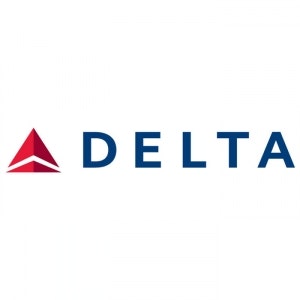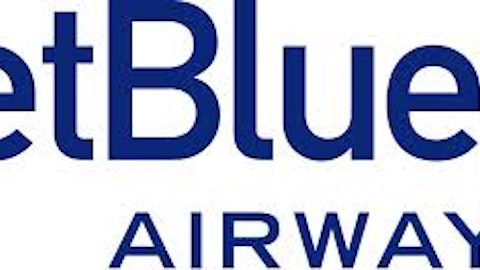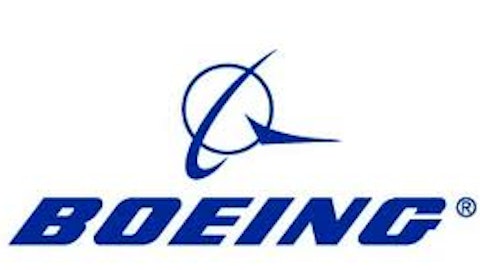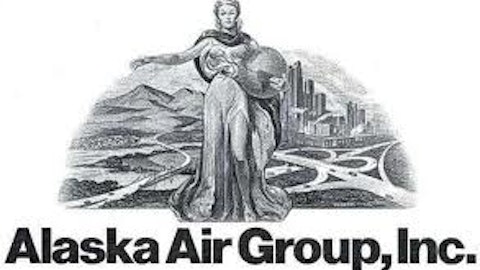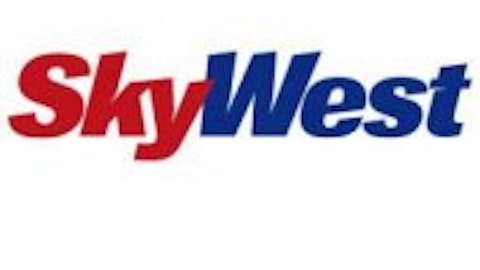A popular Harvard Business School case study written nearly a decade ago highlighted the low-cost carrier (LCC) threat that was becoming a reality to Delta Air Lines, Inc. (NYSE:DAL). Then CEO Leo Mullin predicted that the most dangerous competition facing Delta was not big-named carriers like United Continental Holdings Inc (NYSE:UAL), but instead the growing trends in LCC competitors like Southwest Airlines Co. (NYSE:LUV) and JetBlue Airways Corporation (NASDAQ:JBLU). After failed attempts to compete with the LCCs in the past with Delta Express and Song, Delta looks like it’s now preparing to fly into LCC territory again – just more stealthy.
Delta means change
As the world’s largest airline by fleet size and scheduled passenger traffic, Delta Air Lines, Inc. (NYSE:DAL) today is the result of over 80 years of airline mergers, with the most recent deal being with Northwest Airlines in 2008. Despite the stock price being up over 69% the past year, quarterly profit margins have been a problem for Delta for several years. The airline is carrying a (-1.7%) average quarterly profit margin over the past five years, and hit 0.1% in its most recent quarter.
To add to its problems was the 94% drop in net income for the first quarter of 2013, falling from $124 million a year ago to just $7 million. The airline business is very vulnerable to fuel expenses and overhead costs.
Delta Air Lines, Inc. (NYSE:DAL) is currently in the process of transforming its fleet into one that is far more efficient. In 2011, Delta made an agreement with The Boeing Company (NYSE:BA) to purchase 100 new fuel efficient B-737s with orders that go out to 2018. Last year, Delta made additional purchases from Bombardier Aerospace to acquire 40 CRJ-900s. What is more of a hint of changes to come is the additional leasing of 88 old B-717s – a plane that Boeing actually stopped building over seven years ago.
The change in Delta Air Lines, Inc. (NYSE:DAL)’s fleet has the look and feel of possibly becoming the world’s largest LCC airline. If Delta can transform its fleet into being more fuel efficient while extending the life of older plane models to their limits to save money and improve margins, it might be able to eventually provide airfares that are more competitive to the LCC players. This could make the airline’s failed LCC experiments of the past a distant memory. The purchase of new planes – or lack thereof – earlier in June while in Paris clearly shows Delta is taking a different path from the traditional big airline carriers.
Latest and greatest vs. penny pincher
Unlike Delta Air Lines, Inc. (NYSE:DAL), United bought 35 new Airbus A350s and 20 787s from The Boeing Company (NYSE:BA) while in Paris a couple of weeks ago. While Delta is content with flying many jets that are approaching 40 years old, it appears that United is sticking to its business model of providing the latest in luxury for its customers.
Other upgrades to United Continental Holdings Inc (NYSE:UAL)’s fleet include a new lounge standard that premiered at Chicago O’Hare International Airport and is planned to spread throughout the company’s hubs. United has also expanded the meaning of first class with new transcontinental premium aircraft designs that have flat-bed seats, all-new interiors, and on-demand entertainment. Furthermore, United has invested heavily in staying current by being compatible with the latest software systems like the Windows Phone 8 user support on its planes. Overall, the company’s 7,000 new flat-bed seats across 182 aircraft ranks first among U.S. carriers.
These upgrades don’t appear to help quarterly profit margins for United, though. Average quarterly profit margins are -5.5% the past five years and net income improved, but was a loss of $417 million for the first quarter of 2013. United’s decisions the past few years with its Continental merger, its persistence at building a fleet of luxurious and expensive planes, and creating a first-class environment for as many customers as possible has backfired financially and logistically. The merger still plagues operations as it still has one of the lowest on-time arrival rates in the industry while having some of the highest airfare rates overall.
A better JetBlue?
JetBlue Airways Corporation (NASDAQ:JBLU) is the household name for the LCC alternative when it comes to shopping flights. However, Spirit Airlines Incorporated (NASDAQ:SAVE) looks to be an improved version and vision of what being an LCC is all about. This despite originally being a trucking company up until 1980 and not being an LCC until 2007.
